Agroland Taeshin Farm (아그로랜드 태신목장)
0m 87674 2023-07-17
231 Sangmong 2-gil, Yesan-gun, Chungcheongnam-do
Agroland Taeshin Farm was first established during the Quickening period of the Korean dairy farming industry and has been striving ceaselessly for the growth of the livestock industry. It was the first farm in Korea to be certified as a "dairy experience farm" and, since its opening in 2004, it has enabled visitors to experience the farm and its cows and livestock. It offers a pastoral view of green grassland and an experience of being around cows. Visitors can also take part in a variety of dairy experiences as they milk cows themselves in the experience room, feed them grass and food in the green plains and use the milk to make ice cream or shaved ice.
AMI Art Museum (아미미술관)
7.0 Km 1 2024-06-05
753 Nambu-ro, Dangjin-si, Chungcheongnam-do
AMI Art Museum is a private art museum opened in the previous Yudong Elementary School building. The museum aims to preserve traditional culture and the current natural environment through exhibiting local architecture, culture, customs, and lifestyles as they are. The museum breaks away from simple exhibitions through the creation of new content to revitalize museum culture.
Hamdeok Catholic Church (합덕성당)
7.3 Km 752 2023-06-22
16 , Hapdeokseongdang 2-gil, Dangjin-si, Chungcheongnam-do
Hamdeok Catholic Church was built in 1929 in the gothic style. The church started out as Yangchon Catholic Church in Sanggung-ri, but was moved to the current location by the priest, and renamed Hamdeok Catholic Church. The name was later changed to New Apdeok Catholic Church before being returned to the current Hamdeok Catholic Church.
Hapdeokje Reservoir (합덕제)
7.3 Km 0 2023-07-17
395 Hapdeok-ri, Hapdeok-eup, Dangjin-si, Chungcheongnam-do
Hapdeokje is a reservoir located in Dangjin, Chungcheongnam-do. Designated as a Chungcheongnam-do Monument in 1989, it is known to have been built in the late Unified Silla period for the irrigation of Yedang Plain (Sodeulgangmun Gate). It attracts many tourists in spring with cherry blossoms and canola flower blossoms and in summer with lotus flowers in full bloom. The Hapdeokje Ecotourism Experience Center (opened in 2021) and Hapdeok Folk Irrigation Museum are located nearby, so you can stop by when traveling in the area.
Solmoe Holy Ground (솔뫼성지)
7.5 Km 8698 2020-02-10
132, Solmoe-ro, Ugang-myeon, Dangjin-si, Chungcheongnam-do
+82-41-362-5021
'Solmeo' gets its name from a small cluster of pine trees. The first Korean priest, Saint Kim Dae-gun Andrea was born here on August 21, 1821 and when he was seven, he escaped persecution by following his grandfather to Handeok-dong, Yongin (Golmaemashil). Furthermore, it is where four generations of ancestors such as his great-grandfather Kim Jin-hu (martyred in 1814), great uncle Kim Han-hyun (1816), father Kim Jae-jun (1839), and priest Kim Dae-gun himself (martyred in 1846) lived.
He was chosen as a theological student in Golmaemashil and studied in Macao. In 1846, he was ordained as priest by Bishop Ferréol in Shanghai, Kim Ga Hang Cathedral. After his return to Korea, he worked in Yongin until September 1846 when he was tried, executed and died a martyr when he was only 26. Pope Johannes Paulus II appointed him a saint during his visit to Korea in May 1984. In Solmoe, Priest Kim Dae-gun’s statue and a memorial stands underneath the pine trees and his remains are placed inside the nearby cathedral.
Myeoncheoneupseong Walled Town, Dangjin (당진면천읍성)
8.4 Km 24044 2023-07-17
14 Mongsan-gil, Dangjin-si, Chungcheongnam-do
Since the ancient days, the city of Dangjin was where an important sea route to China existed along with Seosan and Taean. Not only was it an essential trading post with China, it was also a critical military hub. Myeoncheoneupseong Walled Town is widely known to have been constructed in the 16th year of King Chungnyeol's reign in the Goryeo Dynasty (1290) but many believe that it had actually existed ever since the early Baekje period for the purpose of stopping foreign invasions. Myeoncheoneupseong was a fortress that had four main gates in the east, west, south and north.
Rock-carved Buddha Triad in Yonghyeon-ri, Seosan (서산 용현리 마애여래삼존상)
9.4 Km 37513 2020-03-27
65-13, Maaesamjonbul-gil, Seosan-si, Chungcheongnam-do
+82-41-660-2538
Seosan Maaesamjonbul (Rock-Carved Buddha Triad) is carved into a huge rock
cliff at the entrance to Bowonsa Temple at Gayasan Mountain. The Rock-Carved
Buddha was discovered in 1958, and is considered the oldest and one of the most
outstanding Buddha rock carvings in Korea.
Standing Buddha stands in
the center, the cross-legged Buddha is to the right, and Standing Bodhisattva
is on the left. The main Buddha, Yearaeipsang (Standing Buddha) is 2.8m high.
All sculptures carved in the middle of Baekje (6th century) are called
"Baekje's Smile," named for their trademark bright smiles. The appearance
of the smile changes depending on the direction of the sunlight, so these statues
were designated as National Treasure No. 84. The best time to see the smile
is from 9-11 a.m.
The location, an important site along a key transportation
route from China to Baekje, is on the way to Buyeo from the Taean peninsula.
The masterful work represents the active interchange of culture with China during
that time period.
Yonghyeon National Recreational Forest (국립 용현자연휴양림)
10.2 Km 29151 2020-08-26
339, Maaesamjonbul-gil, Seosan-si, Chungcheongnam-do
+82-41-664-1978
Yonghyeon National Recreational Forest is situated in the heart of Yonghyeon Valley between the ridges of Gayasan Mountain around Seongmunbong Peak (alt. 678 m). The forest boasts splendid natural landscape. A hiking trail and loop trail through the forest are established along the ridges of the mountain and connect to the road leading to Seosan Farm, so hiking and walking are convenient and one can get a great view of the Yellow Sea in the distance. The valley waters are particularly clean and clear, and the forest features dense groves of oak trees. There are group accommodation facilities and forest education classes. For an educational and cultural excursion, visitors can also learn about the later Baekje period in a nearby education facility.
House and Tomb of Kim Jeong-hui (추사김정희선생고택·묘)
10.4 Km 20028 2024-02-21
261, Chusagotaek-ro, Sinam-myeon, Yesan-gun, Chungcheongnam-do
This house and tomb are where Kim Jeong-hui (pen name: Chusa, 1786-1856), a Joseon-era scholar and artist, lived and was laid to rest. Chusa Memorial Hall and Chusa Experience Center are found next to the house. After studying in Qing China, Kim Jeong-hui served in multiple government posts. He is best known for his unique calligraphical style, which bears his courtesy name (Chusa), and many works of art that survive to this day. The Experience Center offers traditional art experiences inspired by Kim Jeong-hui’s works.
House of Chusa (추사고택)
10.5 Km 14764 2022-12-28
261, Chusagotaek-ro, Yesan-gun, Chungcheongnam-do
+82-41-339-8248
House of Chusa, Chusa Gotaek in Korean, is the traditional Korean house of the renowned scholar and calligrapher Chusa, also known as Kim Jeong-hui. This old house is known to have been constructed by the great-grandfather of Chusa, Kim Han-Sin.
The Korean-style house compound (266.11 m²) consists of munganchae (a guesthouse), soseuldaemun (a high gate), sarangchae (ㄱ-shaped men's quarters), anchae (ㅁ-shaped women’s quarters) and a shrine where the remains of Chusa are enshrined. Theㄱ-shaped Sarangchae stretches for one kan (traditional measuring unit) to the south and 2 kans to the east and is comprised of two rooms and a daecheongmaru (living area). The Anchae consists of a six-kan daecheongmaru and two one-kan rooms.
Located on the ground is a tomb where Chusa’s great-grandfather (Kim Han-Sin) and his wife (Hwasun Princess) are buried. Nearby, visitors will see a gate that was constructed to commemorate Princess Hwasun’s faithfulness to her husband.
Located approximately 600 meters to the north of the old house is a lacebark pine tree, which was designated as a Natural Monument. The lacebark pine tree, originally from northern China, is among the few of its kind in Korea. It is said that Chusa snuck the pine across the border from China (formerly, the Qing dynasty) into the country when he was 25 years old and planted it at the tomb of his great-grandfather. Originally, the tree had three branches, but two were broken and the third branch was damaged. In 1980, the damaged branch was treated and since then, the tree has been kept under strong protection.

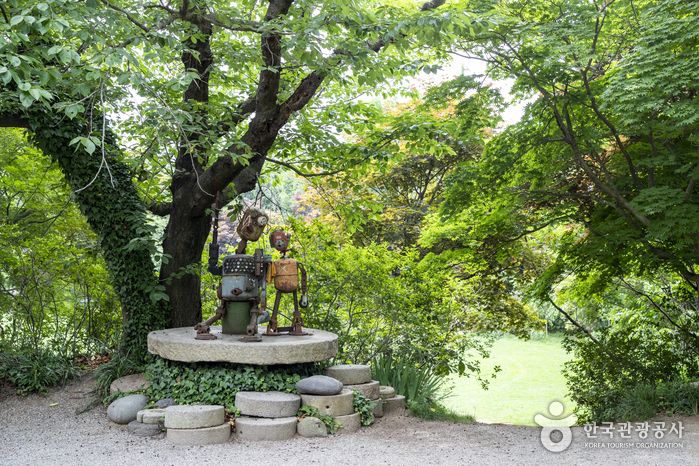
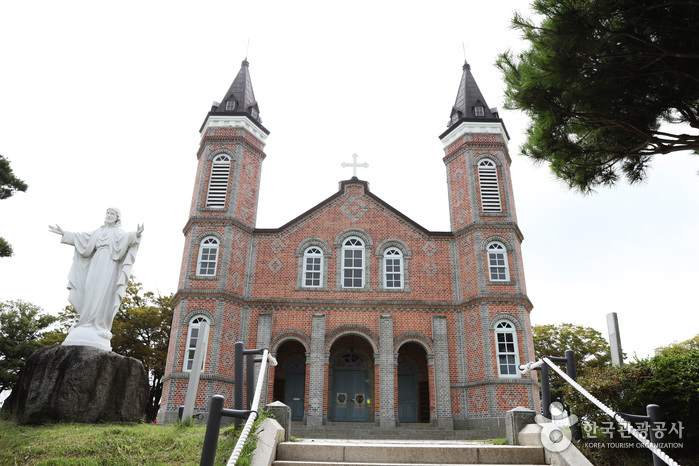
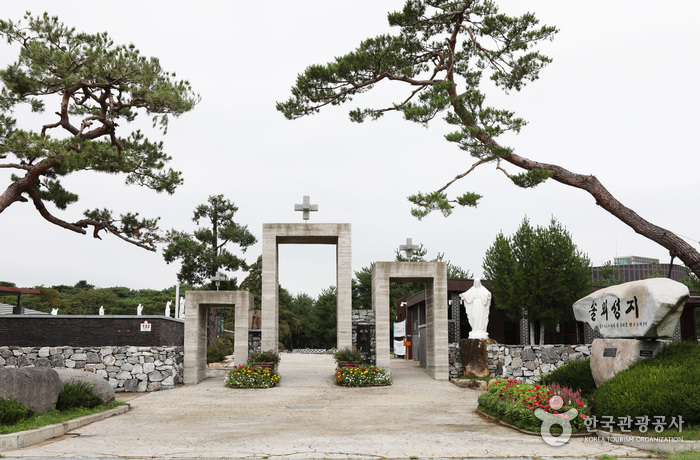
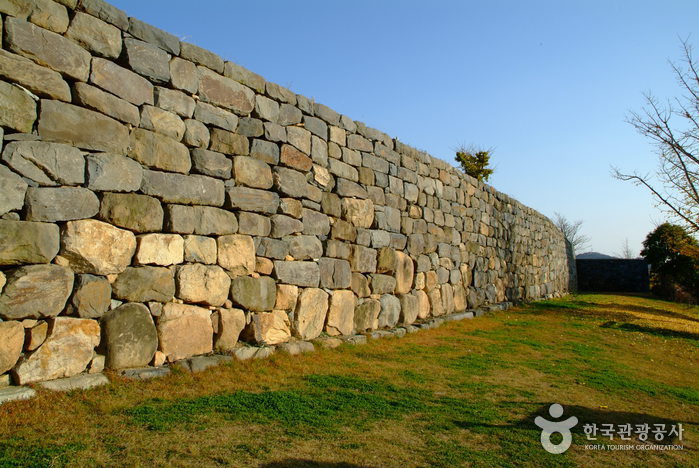
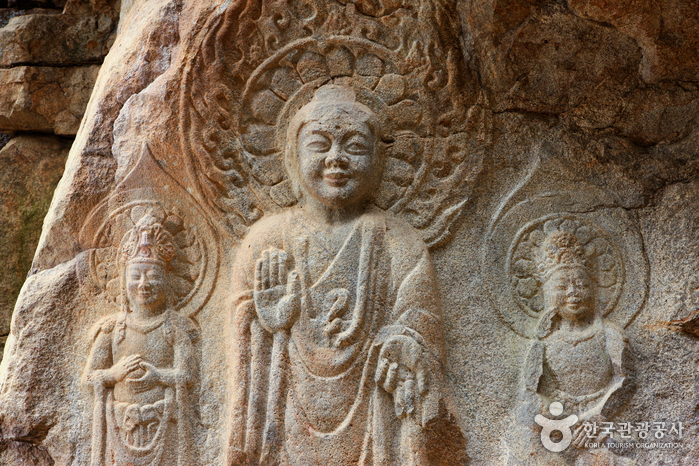
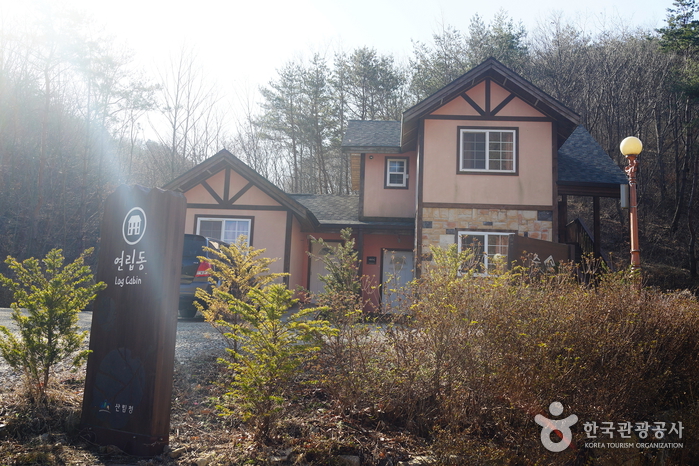
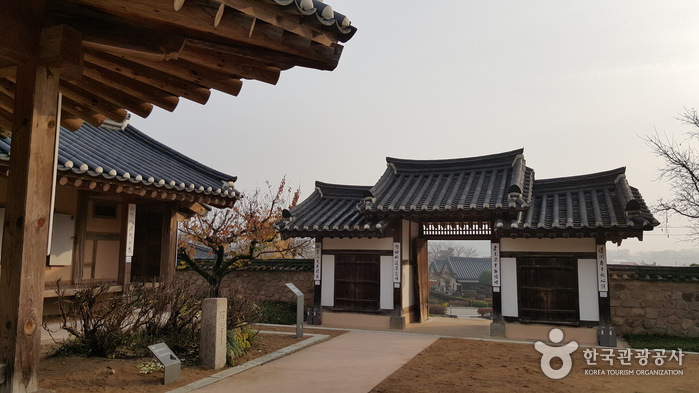
 English
English
 한국어
한국어 日本語
日本語 中文(简体)
中文(简体) Deutsch
Deutsch Français
Français Español
Español Русский
Русский